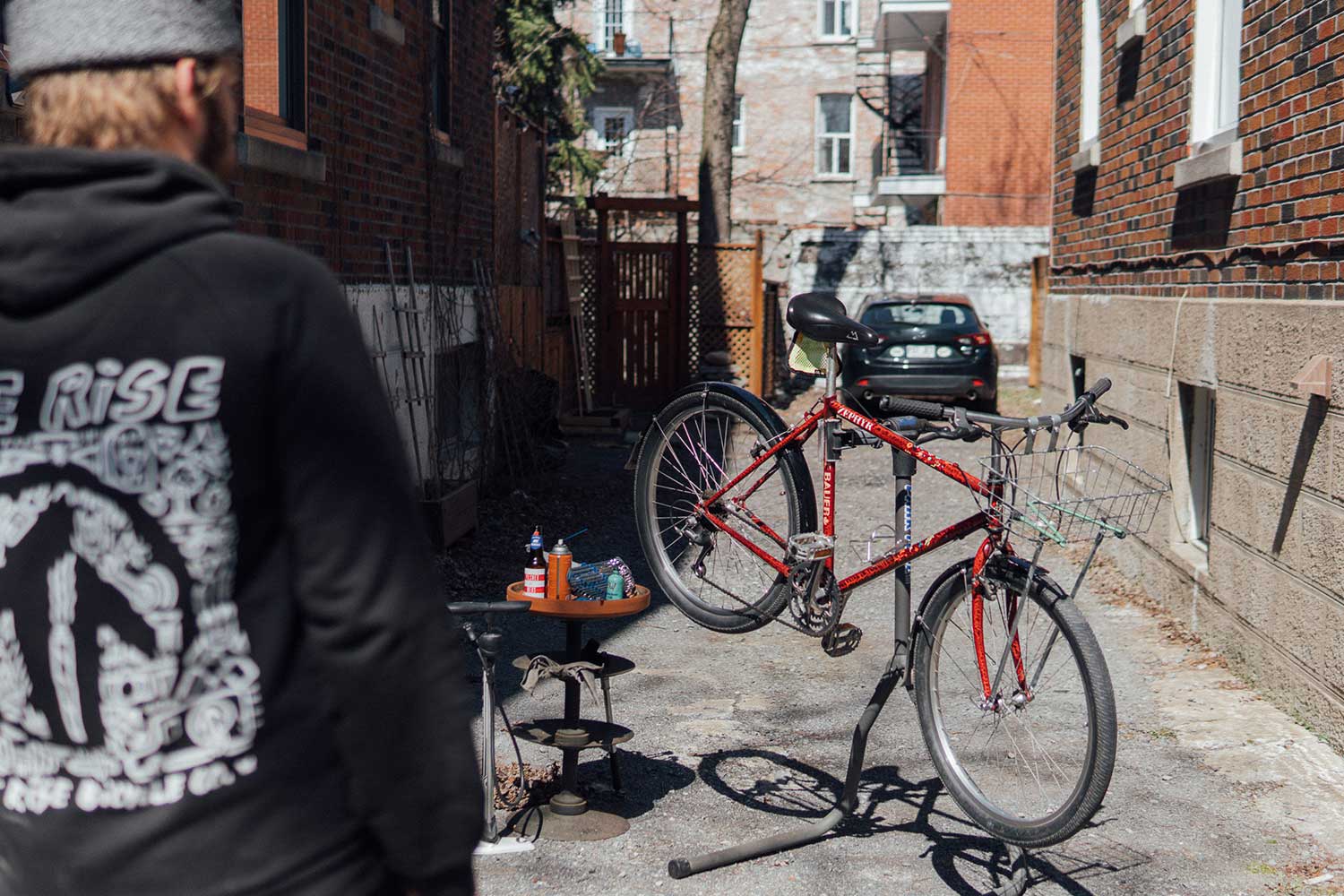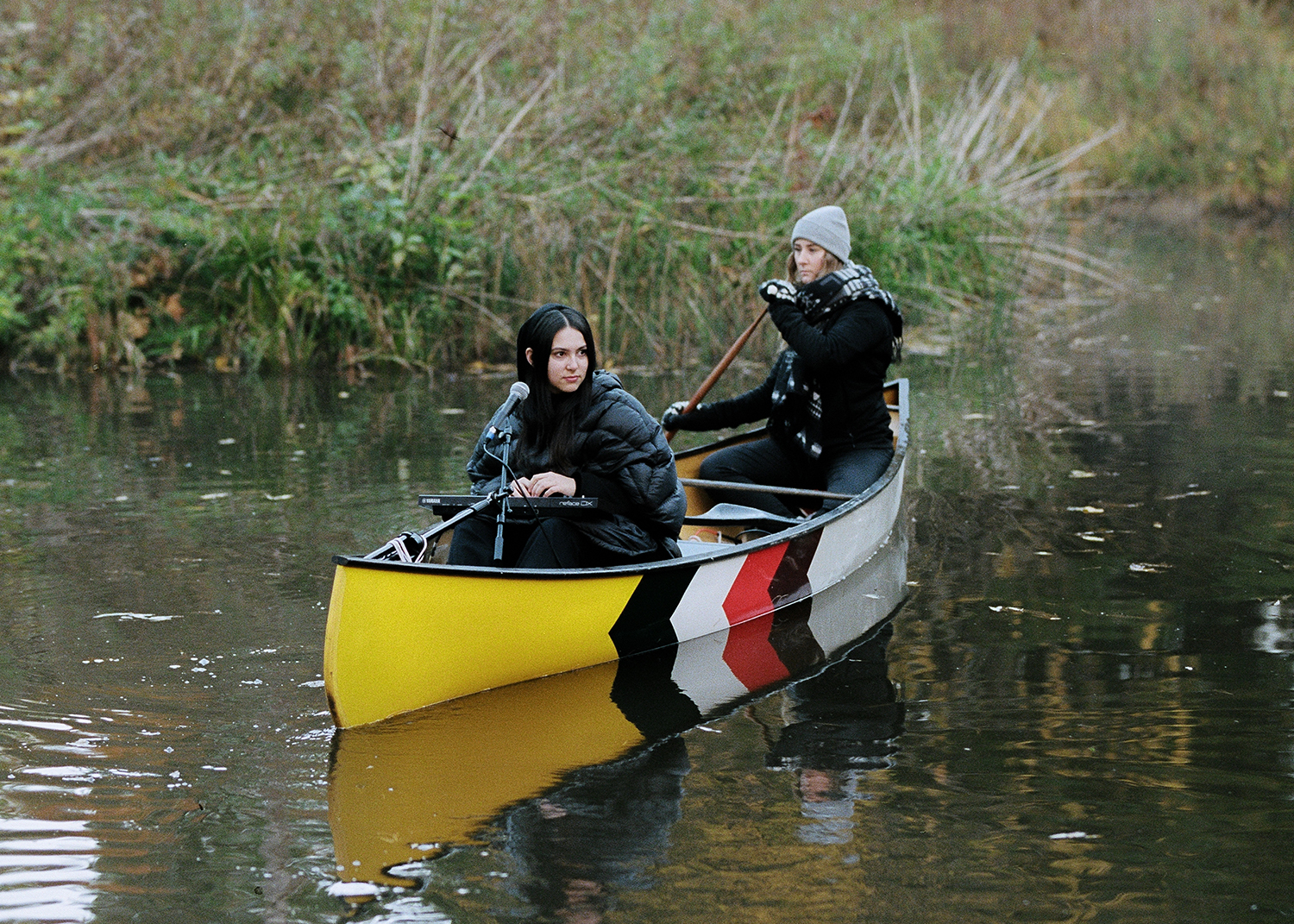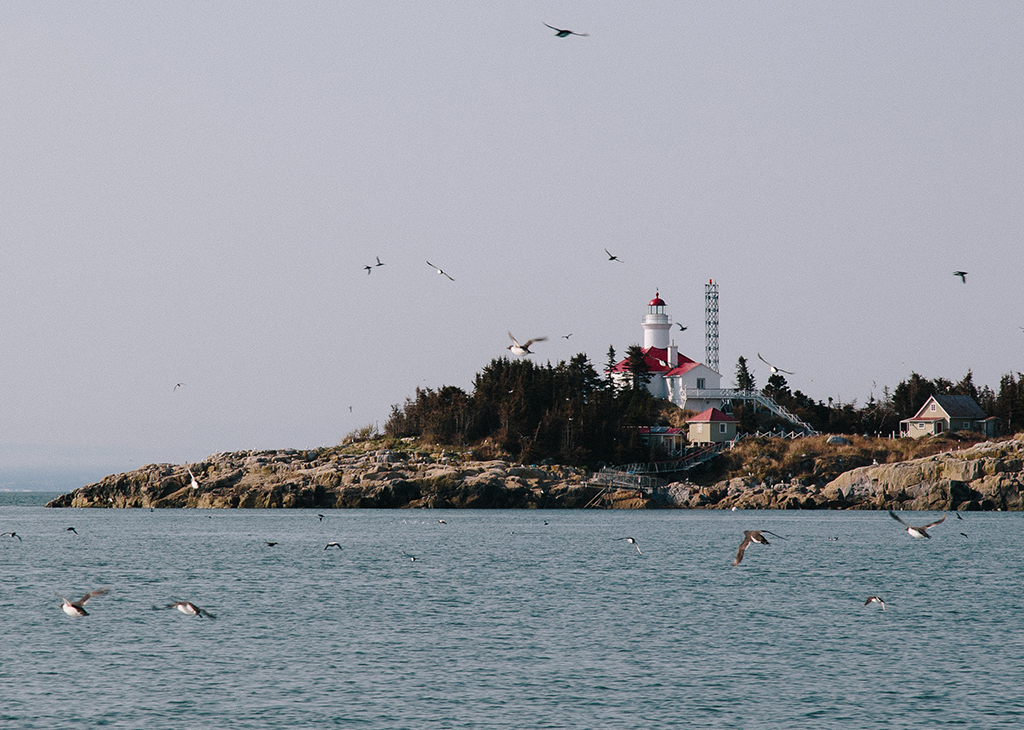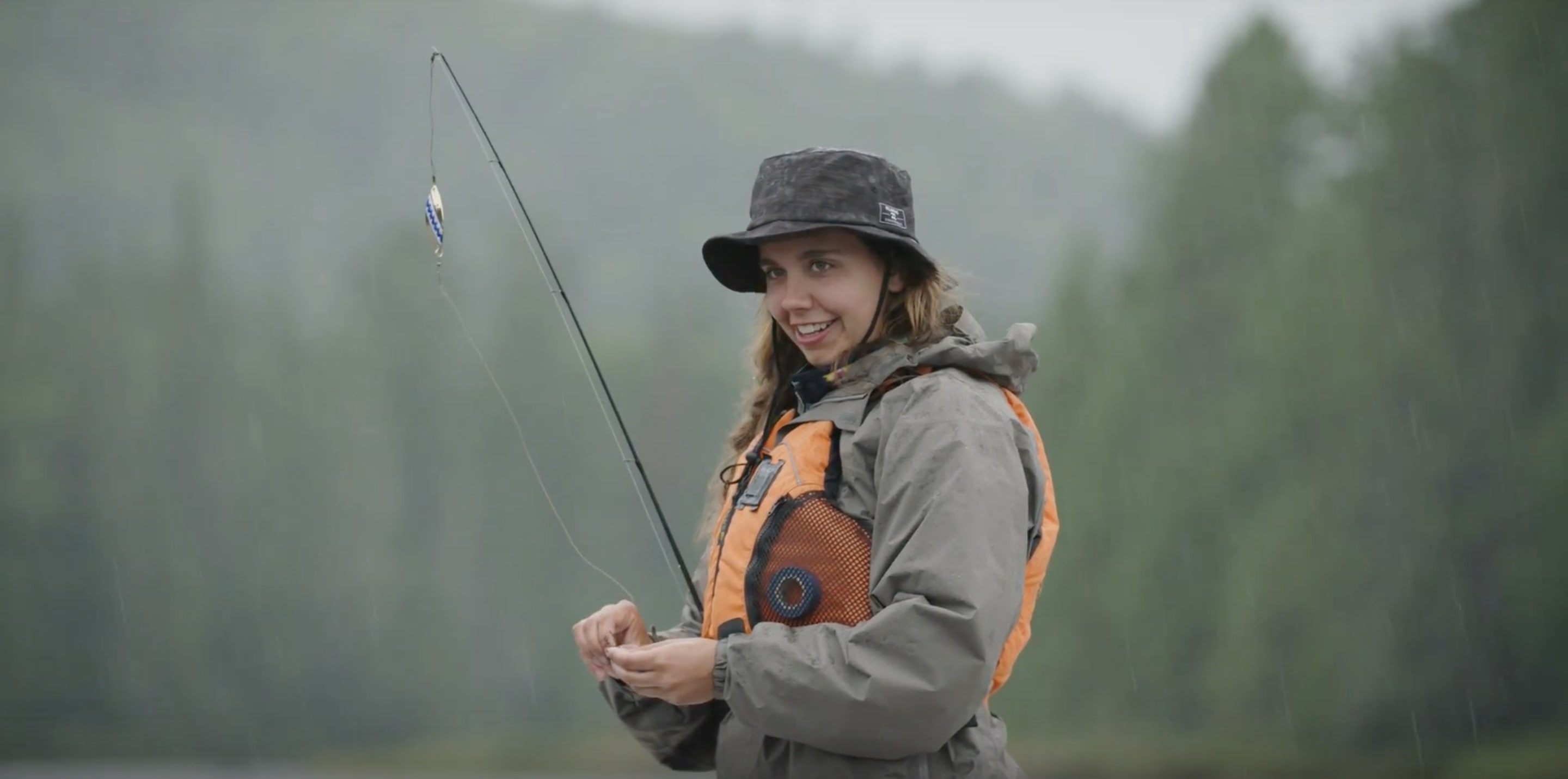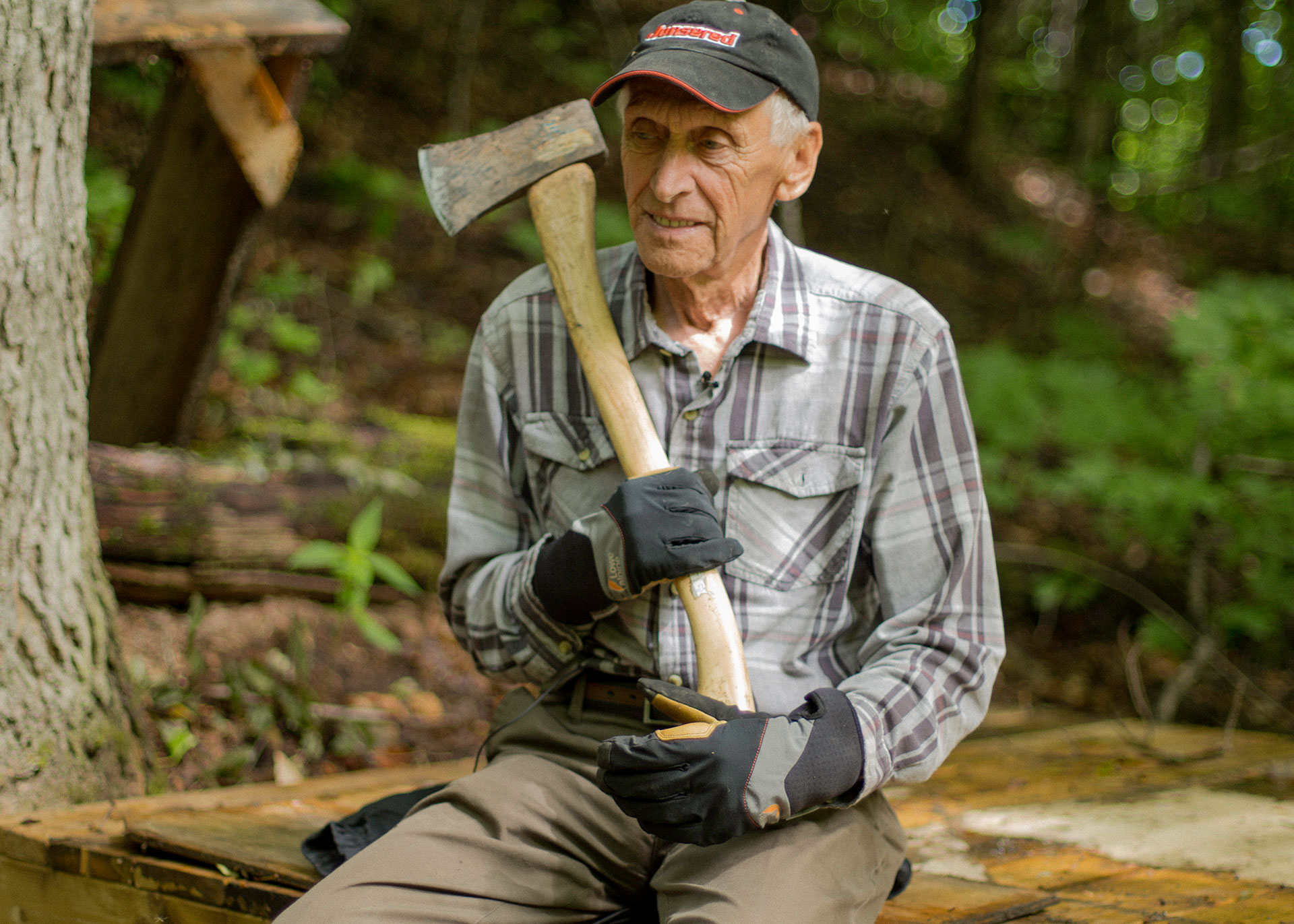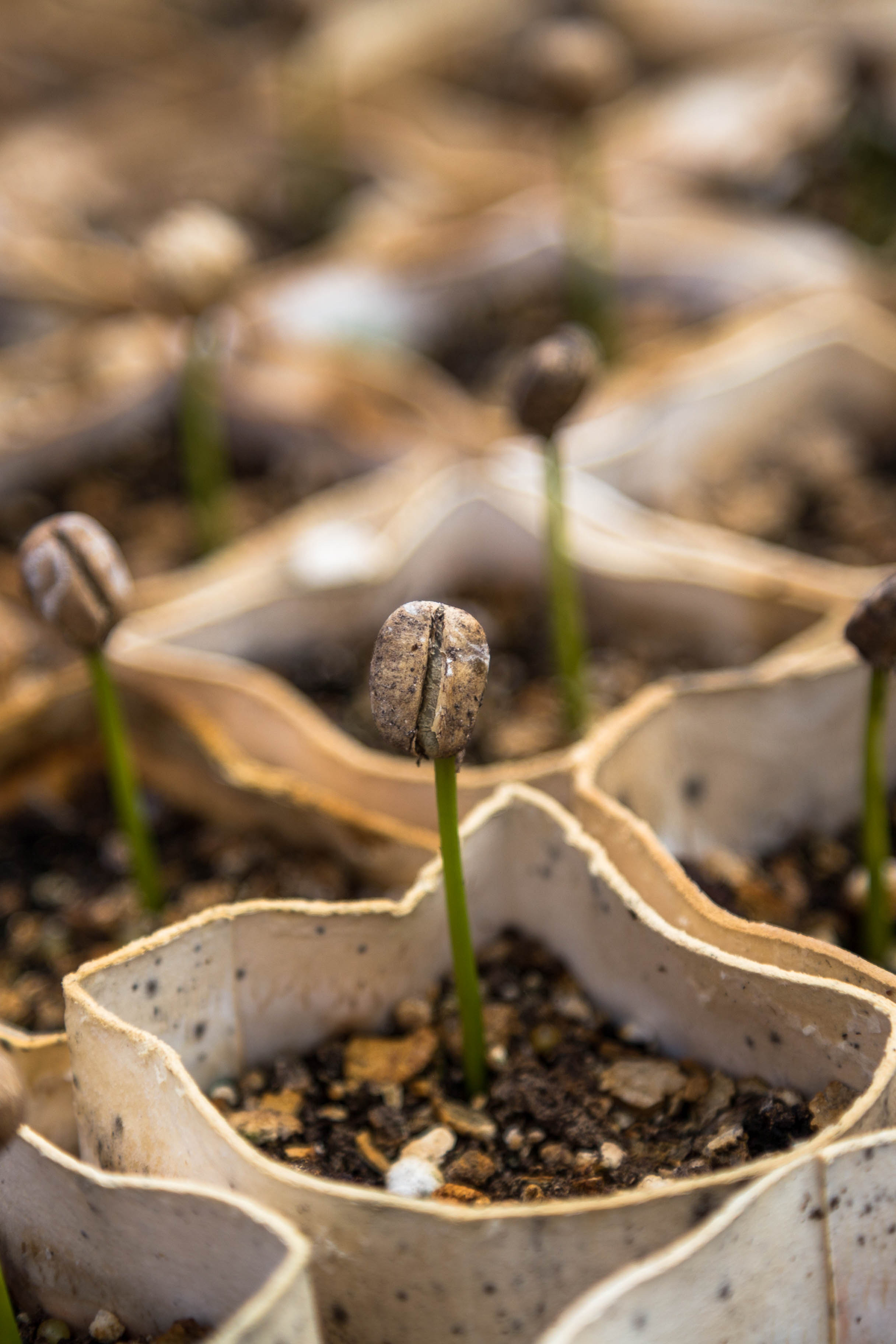BESIDE X ICEBREAKER
Ben Swims Oceans
A modern-day explorer travels to the frontiers of human endurance to raise awareness about plastics in our oceans.
Looking at satellite images of the earth, you’d be forgiven for concluding that there’s nothing much left to explore out there. The world’s land masses have all been pretty well mapped, measured, and photographed, zoomable to the last pixel. So where does that leave the true explorers, those who still pine for the unknown?
Benoît Lecomte is one of those rare adventurers who can’t do anything else. The 52-year-old Frenchman has devoted his life to satisfying an irrepressible urge to discover the borders of the human experience, and then to keep going. And he’s found a remarkable solution to the contemporary explorer’s dilemma: he swims oceans.
It all started when in his teens he heard about Gérard d’Aboville’s solo crossing of the Atlantic in a rowboat. Lecomte still struggles to articulate his initial, profound connection with d’Aboville’s feat, but it opened a path for him that he has never stopped following. In 1998 Lecomte became the first person to swim across the Atlantic Ocean without a kick board. Since then, he has been front-crawling his way across the earth’s largest bodies of water: eight hours a day like a job, breathing through a snorkel and staring straight down into the abyss, for months on end. The immense challenges of long-distance swimming gave Lecomte meaning and fulfillment . . . but what did it matter to the rest of the world?
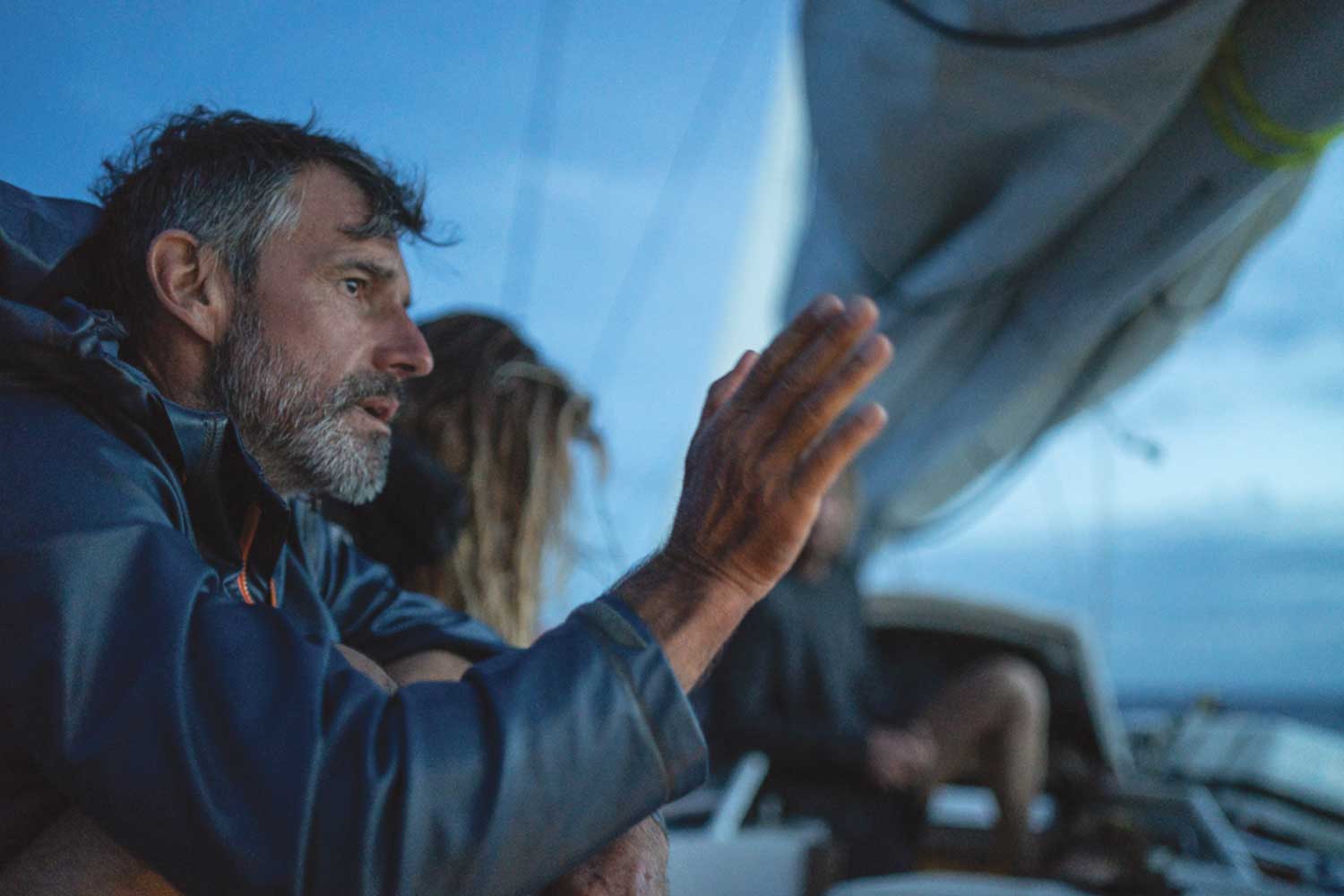
Immersed in plastic
_____________
Over the years, Lecomte has sought ways to connect his passion to a higher purpose. After 9/11, he swam the American coastline in the name of liberty, finishing on Staten Island in New York. In recent years, though, Lecomte has found a mission that matches his love of the water—now, he swims to raise awareness of the problem of plastics in the ocean.
It’s a problem Lecomte has been observing lately. “When I was a little kid playing on the beach, I never found any plastic,” he recalls. “Now when I’m playing with my kids on the beach, we always find plastic.” It’s their future that motivates him today. “The next generation will pay the price.” He hopes that his epic long-distance swims can draw more attention to the issue.
In 2018 Lecomte set out to swim 5,500 nautical miles [10,186 km] across the Pacific, from Japan to San Francisco, alongside a team of researchers. Their aim was twofold: to draw attention to the otherwise distant and abstract-seeming crisis of ocean plastification, and to collect high-quality, first-hand data on the actual scope of it. They collected samples ranging from large pieces that bob along the surface to the tiny bits of microplastic that float in the water column to the invisible microfibres that we shed from our clothing by the hundreds of thousands with every load of laundry. Aptly, Lecomte dubbed his journey The Longest Swim, but equipment failure cut the trip short after 165 days at sea, after he’d swum 1,753 miles [2,821 km] across open ocean.
This past year, Lecomte went back out again to continue the project, this time with funding and support from Icebreaker, an outdoor apparel company that focuses on using natural fibres. “Ben represents the ability of people to use their strengths to corral others to think differently,” says Carla Murphy, Icebreaker’s chief brand and product officer. To inspire the kind of transformed relationship to the environment that the world needs, she says, it takes people like Lecomte, who combines total personal investment in the issue with the pursuit of reliable facts and information.
Lecomte’s second journey took a more direct approach to the problem at hand. This time, he’d swim 350 nautical miles [648 km] directly through the Great Pacific Garbage Patch between Hawaii and California, also called “the Vortex”—a swirling gyre of currents that draws in debris from all over the ocean. There are five such vortices in the world, but the one between Hawaii and California is the largest and most polluted. It spans 617,000 square miles [1.6 million km2] of ocean and contains roughly 80,000 tons of plastic. Fittingly, Lecomte dubbed this new journey The Vortex Swim.
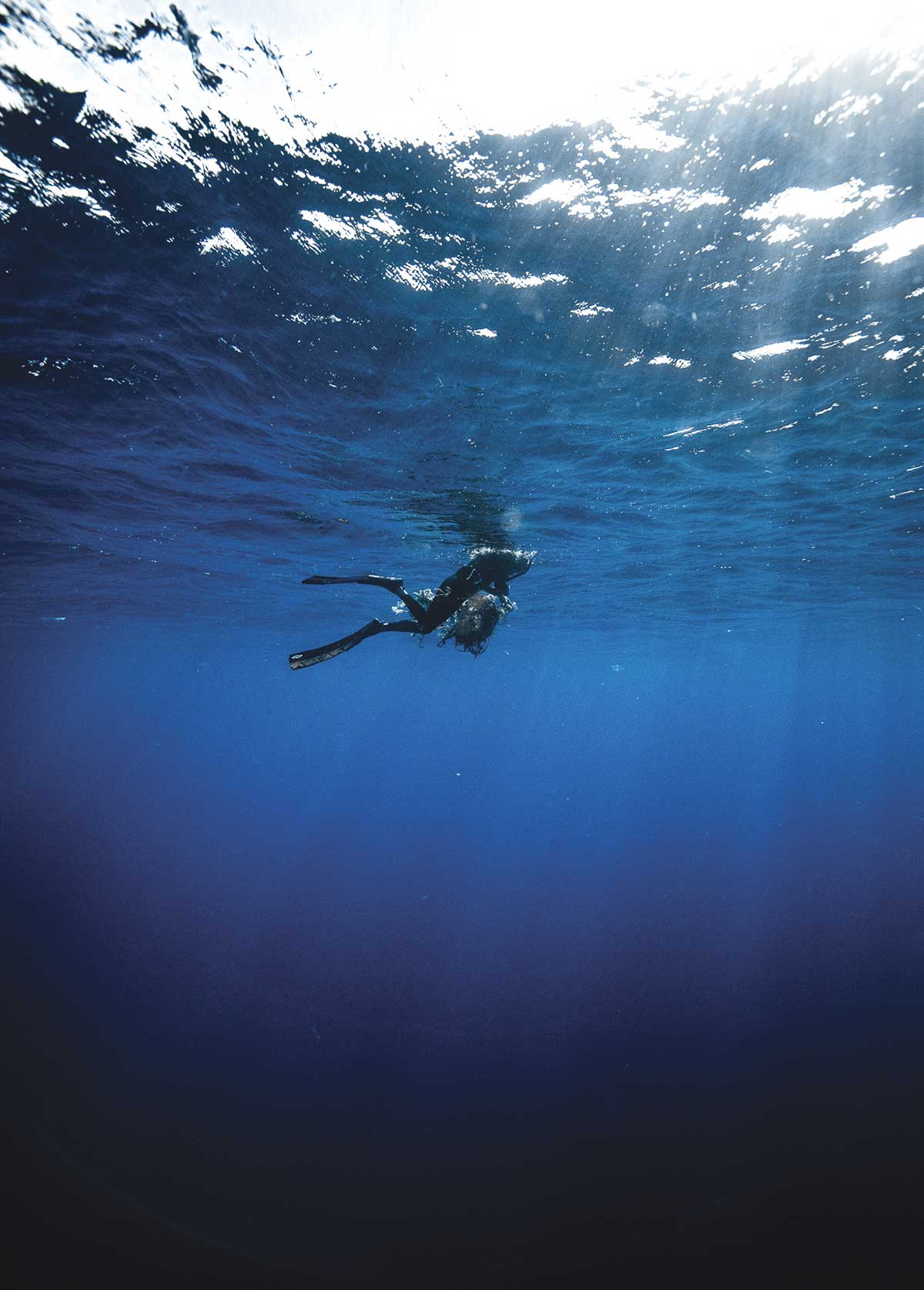
Plastic soup
_____________
When people read about the Great Pacific Garbage Patch, they tend to picture a floating island of trash. In reality, it’s more like a soup. Crossing it in a fast-moving boat, you might not even know you’re in it, but down in the water, Lecomte got to see what it’s really like. For three months, he couldn’t look away. While many researchers are working on the problem of ocean plastics, none know it as intimately as Lecomte.
While larger pieces of plastic do float by, Lecomte describes the experience as being enveloped by a dense smog of microplastics, extending several metres below the surface. With the sunlight glinting off the small specks of plastic, he says it’s like looking up at a snowy sky at night. In fact, for the first part of his journey, he thought he was seeing small organisms—a beautiful vision. One day, he decided to investigate more carefully. Instead of organisms, he was horrified to realize it was all plastic.
When it comes to the problem of plastics in the ocean, open-water swimming and data collection make a perfect marriage. Lecomte’s project provided a unique opportunity for researchers like Dr. Sarah-Jeanne Royer at the University of San Diego, the lead scientific advisor to the project. Forced to move at Lecomte’s slow pace, the researchers were able to take much more methodical observations from the boat and collect more samples across the vortex while Lecomte acted as the underwater spotter. Looking beneath the surface, he was able to see just how much more plastic is out there than we previously thought.
Tyral Dalitz, the expedition manager, organized who would be doing the science protocols and collecting data each day. The team members rotated between these tasks and riding in a Zodiac with Lecomte, to help him stay on course, as well as general upkeep and maintenance on the support boat. Every day, those tasked with data collection would pull up a bucket of water, run it through a strainer, and begin meticulously counting the bits of plastic. This could take hours, as microplastics can be as small as just a few millimetres.
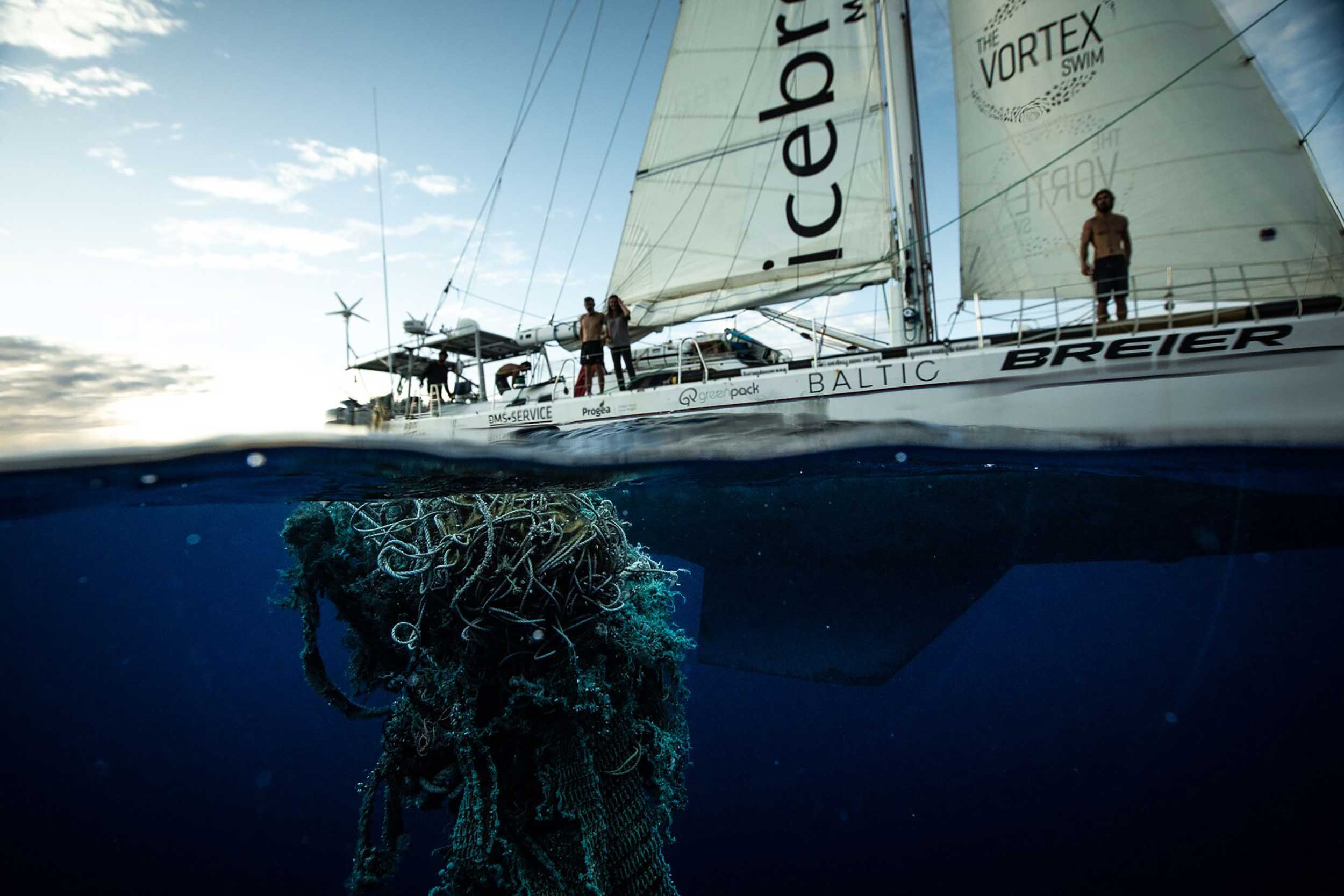
How much is really out there?
_____________
The amount of plastic in the ocean is not well-known, but a widely cited study from 2015 estimates that around eight million metric tons of plastic are discarded into the ocean every year, about one garbage truck every minute. However, this figure doesn’t take into account the global impact of the fishing industry, which research suggests is a major contributor, nor the amount of plastic entering the ocean as microfibres from plastic-based clothing fabrics such as lycra, nylon, polyester, and so on. Sixty per cent of our clothing today comes from plastic.
Plastic microfibres are invisible to the naked eye, but they contribute a massive amount of plastic to the ocean that is hard to clean up. A single load of polyester clothing in the washing machine releases up to 700,000 microfibres into waterways and eventually to the ocean. “This is a big source of plastic pollution to the environment,” says Dr. Royer. The Ellen MacArthur Foundation estimates that if we don’t do anything to curb plastic fabrics, we’ll have 22 million metric tons of plastic microfibres clogging up the ocean by 2050.
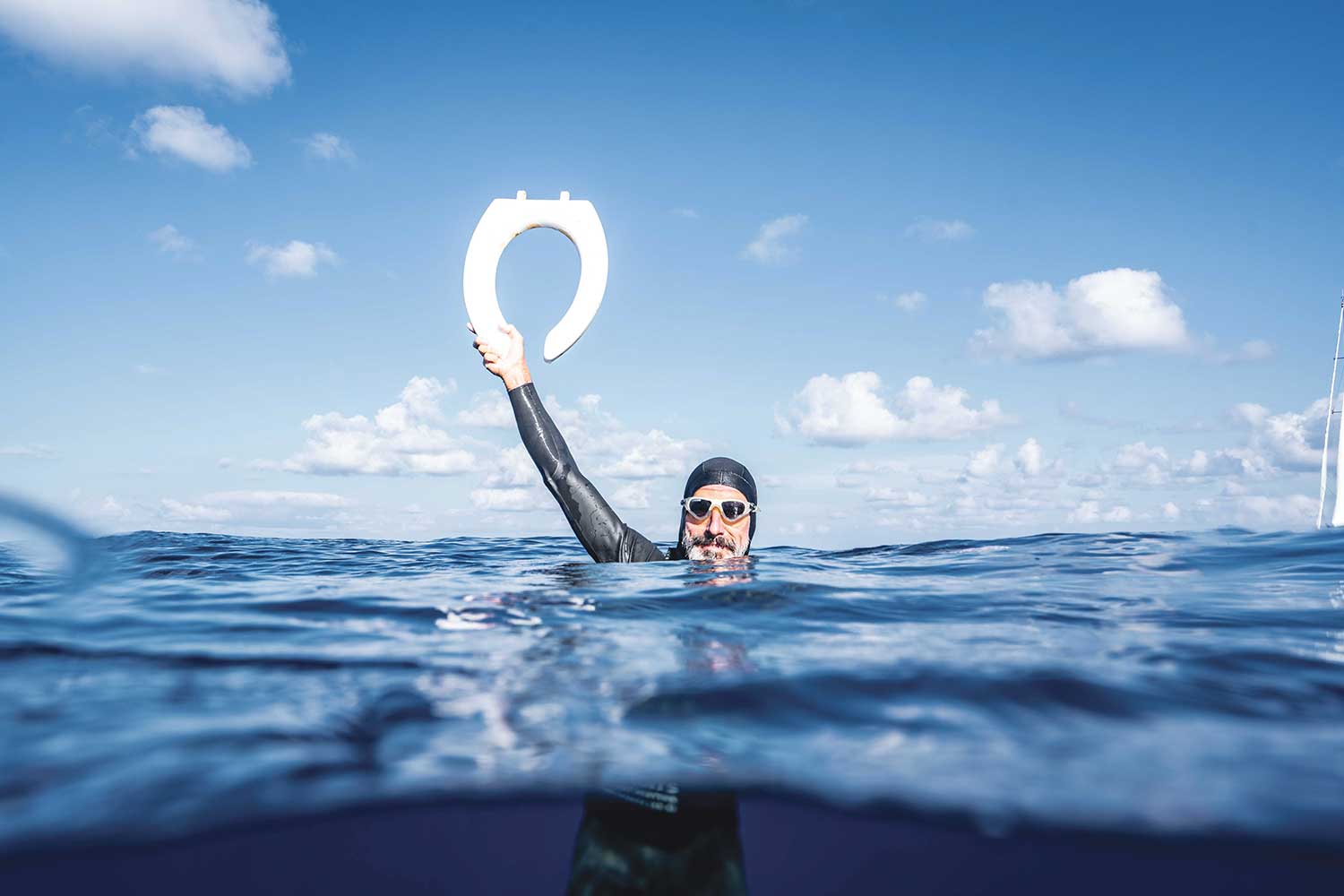

Deadly diet
_____________
The team also spent periods each day counting the bigger pieces of plastic debris— toothbrushes and bottle caps and all manner of consumer products—floating in the ocean. It was a numbing, Sisyphean task, says Dalitz, but encounters with wildlife always pulled them back to the importance of their mission.
As plastic degrades, pieces become bite-size for sea life. According to Dr. Royer, a wide range of organisms ingest microplastics of varying sizes. “It can fill their stomachs and they’ll feel full, but they’ll be deprived of nutrients, so they might starve to death.”
Lecomte and his team would run into playful dolphins, schools of mahi mahi fish swimming underneath, and the occasional curious shark, while albatross made their own frequent investigations into the researchers’ activities. The most thrilling encounter was with an adult sperm whale, 49 feet long. “It was surreal, to see that big mass coming,” Lecomte recalls. “The closest one made eye contact and rolled onto its back as it came toward me. Then it dove down and disappeared.”
Yet these moments frequently turned bittersweet when the team took up their daily bucket samples to uncover unusually high quantities of microplastics, mixed in with zooplankton. The currents had concentrated the zooplankton and plastic together, leaving the whales no choice but to make a giant meal of both.

Beyond limits
_____________
Plastic is permanent: it degrades, but it’s there to stay. While the non-profit Ocean Cleanup, founded in 2013 in the Netherlands, has made waves for its successful implementation of a device that skims plastic off the surface of the Pacific Garbage Patch, it doesn’t remove plastic submerged in the water column, the flowing supermarket of food for so many marine species. “We need to find a solution,” says Dr. Royer. “We need to remove [the plastic], so it will stop degrading and affecting wildlife.”
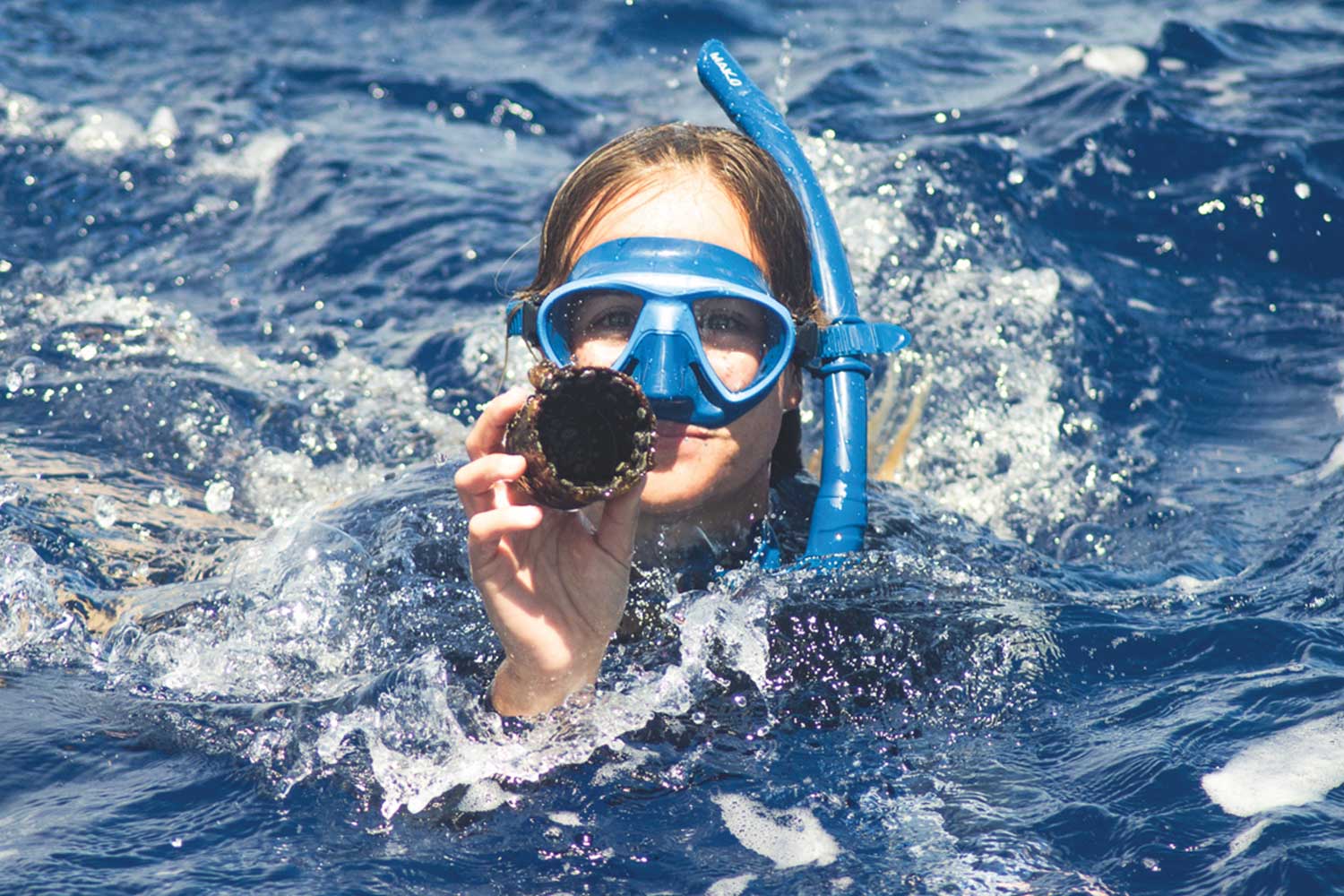
Regardless of whether science finds the answers to this problem, it’s imperative that we stem the flow of plastic originating on land into the water. If we don’t do anything, by 2050, we’ll have twice as much plastic in the environment as we do already. Companies like Icebreaker have a role to play in halting the flow of ocean plastic. “For us to overcome this plastic problem, you have to work with businesses who are pushing other businesses to do more sustainable practices,” says Dalitz.
And then there’s Lecomte, plunging back into the ocean year after year to make sure this problem remains more than a blip on the sonar. After putting in thousands of miles on open water, he’s learned the power of harnessing his focus. “Your mind plays tricks on you,” he says. Instead of succumbing to negative feelings, he concentrates on manageable goals—another day, another hour—which together add up to achieving the impossible.

Founded in 1995, Icebreaker makes ethically produced, high-performance outdoor apparel providing sustainable alternatives to synthetic-based clothing. Eighty-four per cent of their current product range is made from natural fibres such as merino wool and Tencel™ (a fibre derived from sustainably sourced eucalyptus plants), so that consumers have the option to make a transformative choice in what they wear. Merino wool clothing has a lighter environmental footprint than other fabrics because it is naturally biodegradable and odour- resistant, therefore requiring less washing, which in turn limits microfibres from entering the waterways.
Today, 64 per cent of new clothing is made with petrochemical-based synthetics like polyester, nylon, and lycra, which release hundreds of thousands of plastic microfibres with each wash, often ending up in our oceans and waterways, eventually being digested by marine animals in the wild. To raise awareness of this issue and create the opportunity for critical scientific research, Icebreaker partnered with The Vortex Swim and Ben Lecomte for the swim through the centre of the Pacific trash vortex in 2019.




